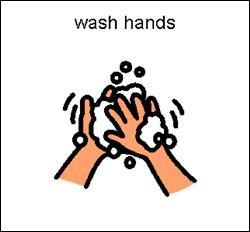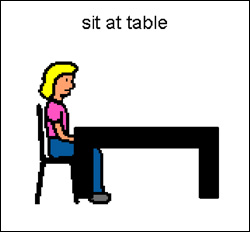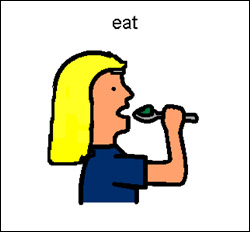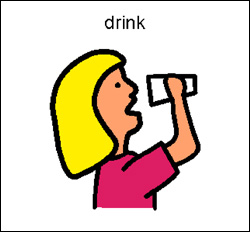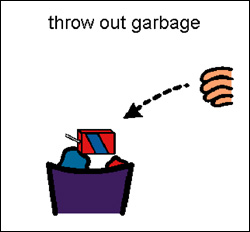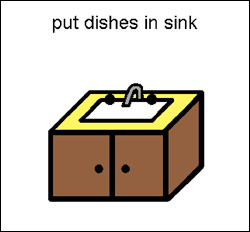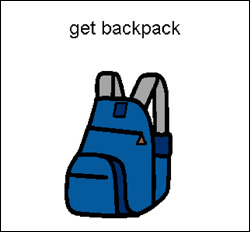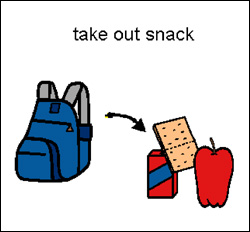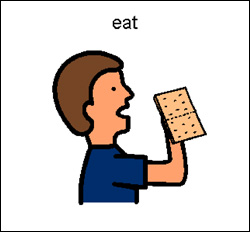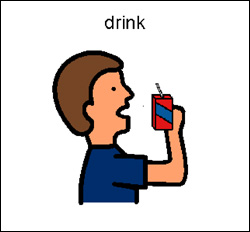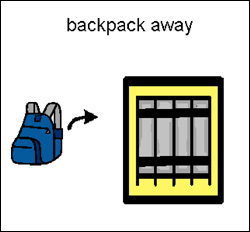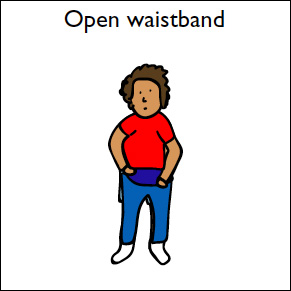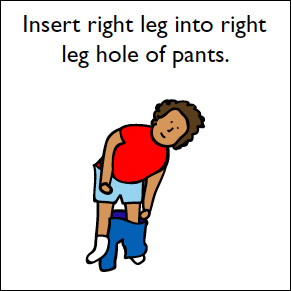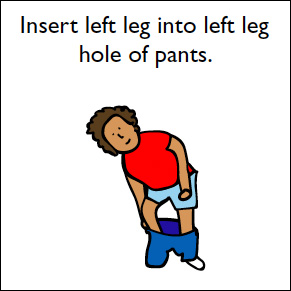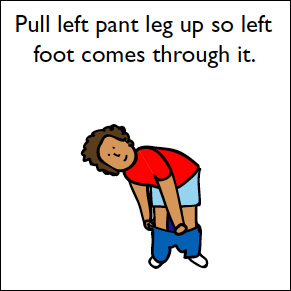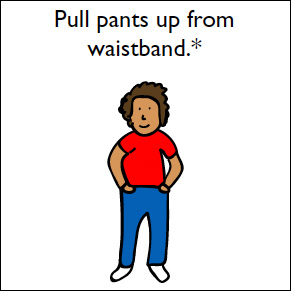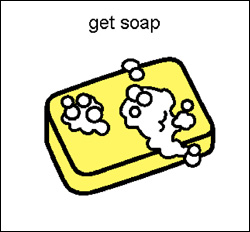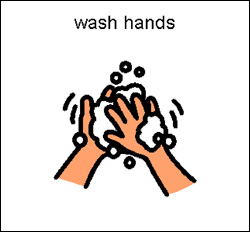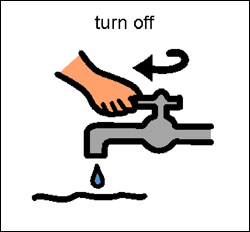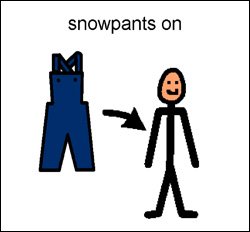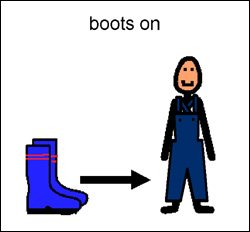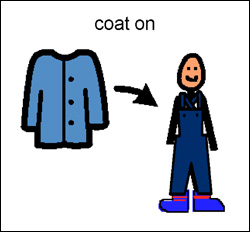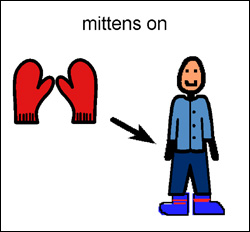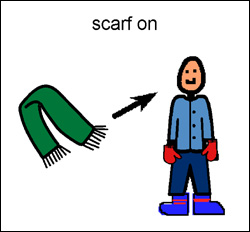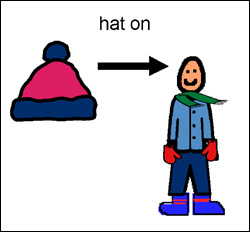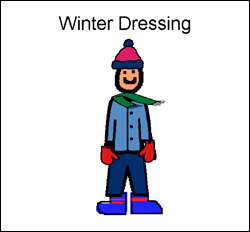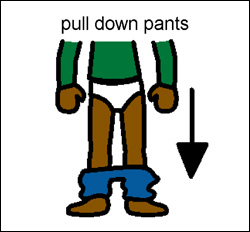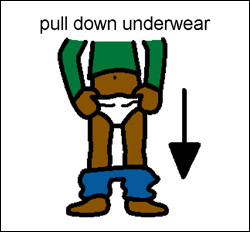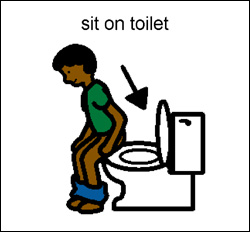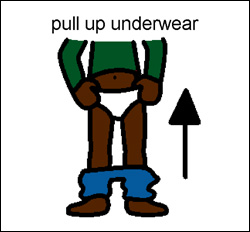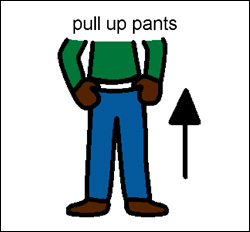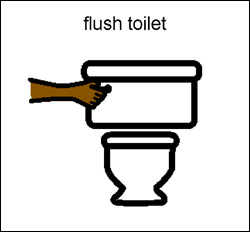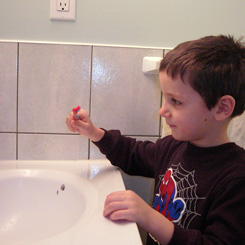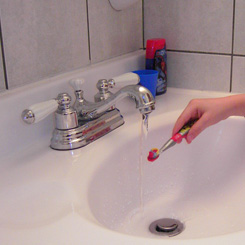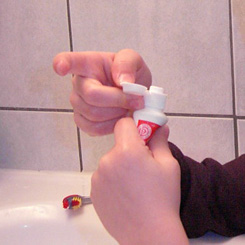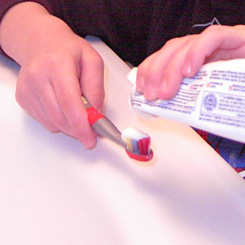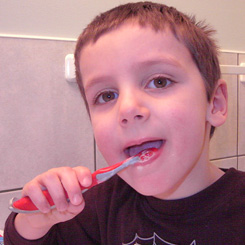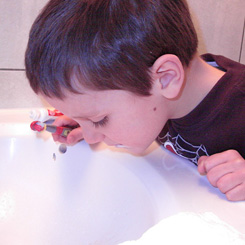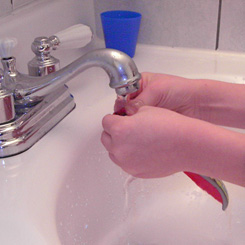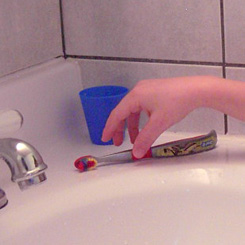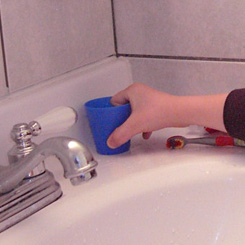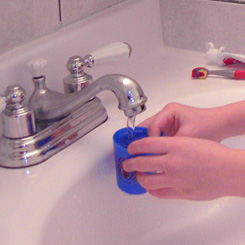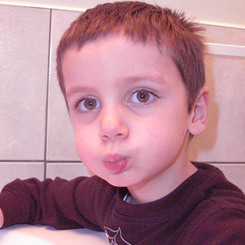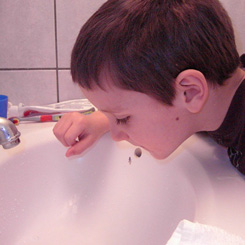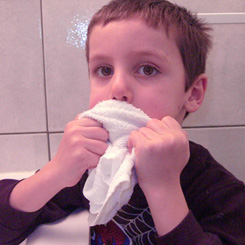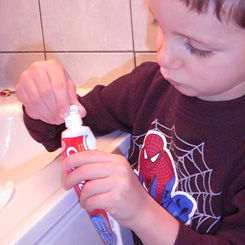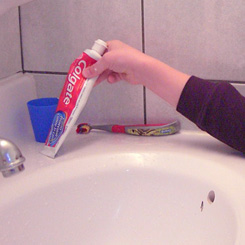Learning new self-care tasks such as dressing oneself takes time and practise. A visual sequence is basically a series of pictures showing the steps that are necessary to complete a task.
Breaking a self-care task into several steps (a process also known as task analysis) will make it easier for your child to follow along when you begin teaching him how to do it. As adults, we sometimes forget how many steps are involved in a task because we have been doing it for so long. Let’s take ’brushing teeth‘ as an example. Here are just some of the steps involved: finding one’s toothbrush, getting some toothpaste, opening toothpaste, squeezing toothpaste onto the toothbrush, opening one’s mouth, brushing teeth gently, and rinsing one’s mouth with water. Even a simple task like brushing teeth can be very complex.
Now, list the steps to a self-care task that you would like to teach your child. Once you have the steps listed, make a note of which steps he is able to do and which ones may be difficult. This will help you plan which steps to focus on when you begin teaching.
When creating a visual sequence remember that it is difficult for children (and adults) to absorb more than six or seven steps at a time. Once you have listed the steps of a self-care task you are ready to create a visual sequence. This will help your child:
- Know which objects he needs to complete the task.
- Learn how he can use these objects.
- Understand the sequence of actions he must follow to complete the task.
Types of pictures to use

You can use photos of a sibling completing the self-care task, cut pictures from a magazine, or draw them yourself. You can also visit the Visuals Engine to use picture symbols. Make sure that the pictures are clear and that your child will be able to identify the objects in the photos or drawings. It is a good idea to label each step in the sequence with words as a reminder for everyone involved in your child’s self-care routines. For example, the words “Get toothbrush” can be printed above a picture of a toothbrush. Using the same words to describe the actions will make it easier for your child to learn the steps in the sequence.
Teaching the new skill
When teaching your child a new skill, it helps if the space you are using is organized and free of distractions. For example, in the bathroom, you can set aside a small space in a cabinet or on the counter with the objects your child needs to brush his teeth. Providing him with a colourful toothbrush and special ‘kid-friendly’ toothpaste will help make ‘brushing teeth’ more enjoyable.
Introduce the visual sequence by posting it at your child’s eye level, pointing to the picture of each step, and reading its label before completing the action. This teaches the connection between a specific picture and action. Once your child is familiar with the visual sequence, you can ask him to say or point to the next step.
Some steps of the task may be physically difficult for your child to learn even though he knows what to do. If he becomes frustrated, ask if he needs help and guide him through the step hand over hand. It is OK if you need to help your child with most of the routine. The important part is to praise him for his efforts.
In time, you may notice that your child is able to complete some of the steps on his own and with little supervision. At this time, you can decrease the number of pictures in the visual sequence. For example, ‘get toothbrush and toothpaste’, ‘brush teeth’, ‘rinse mouth’. Once you are sure that your child is brushing his teeth properly you may want to allow him to do it on his own once a day. Be sure to leave the sequence posted as a reminder!
Remember that visual supports make it easier for a child to understand and communicate. Using visuals to teach your child self-care skills is the first step towards independence.

